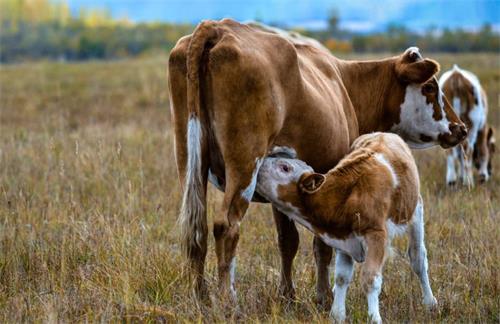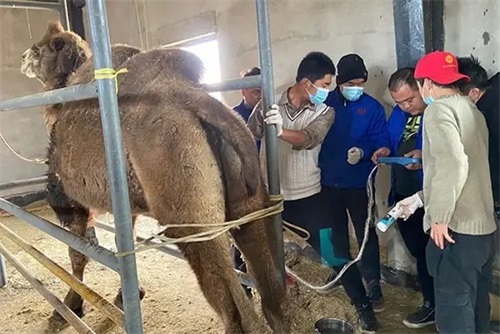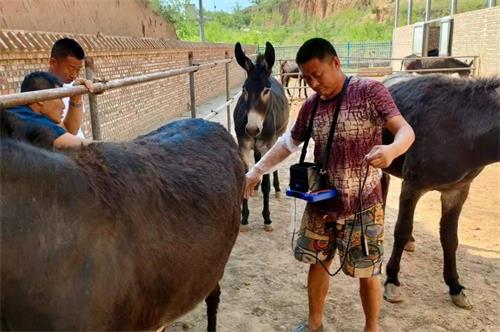A sick dog, about 6 years old, came for treatment due to not eating, being thin, and having a lump in the abdominal cavity. The sick dog is mentally lethargic, has difficulty defecating, and is slightly bloody. When palpating the abdomen, the abdominal wall is relatively tense, and a spherical mass can be felt in the pelvis. The sick dog is experiencing pain, and upon rectal palpation, the lump shows a wave like sensation. The preliminary diagnosis is a glandular cyst. Animal B-ultrasound examination revealed a cystic fluid shadow below the bladder, accompanied by high-density glandular parenchymal shadows. Surgical resection was performed, and after cutting open the abdominal cavity, it was found that the cyst gland was located at the bottom of the pelvis and closely attached to the sacrum. Even if the incision was expanded to the pubic symphysis, the cyst gland could not be seen. Therefore, the difficulty of surgical resection was very high, and due to the poor physical condition of the sick dog, it was difficult to recover after surgery. Finally, it was decided to euthanize the dog. After dissection, the cyst gland was found to be fist sized. The fluid inside the cyst was pale yellow when cut open. The results are consistent with those of the animal ultrasound examination. On animal B-ultrasound, images of bladder and glandular cysts can be seen. The upper liquid dark area is the bladder image, while the lower liquid dark area is the glandular cyst image. To the left of the cyst image is the high-density glandular parenchyma image.
A sick dog, about 12 years old, with poor physical condition. It was found that purulent fluid was discharged after urination, and there was pain when palpated in the abdomen. A circular mass could be felt in the back of the abdominal cavity, but after several days of treatment, there was no significant improvement. Preliminary diagnosis is * * * glandular disease, and animal B-ultrasound examination is performed. Images of bladder and gland can be seen in one section. In the homogeneous structure of one lobe, there is a weakly echogenic area with unclear boundaries, while in the other lobe, a hypoechoic cystic area is found. The diagnosis of glandular cyst by animal B-ultrasound is * * *. Decided to perform surgical resection, during which both testicles were also removed (as both testicles had already developed lesions). After surgery, the excised gland will be incised, and there is a cystic cavity in one lobe of the gland containing a pale yellow purulent fluid. The results are consistent with those of the animal ultrasound examination. The sick dog died on the second day after surgery. The imaging of the bladder and * * * gland on animal B-ultrasound shows the bladder, with areas of weak echo appearing in homogeneous structures; The image of the other gland shows a cystic area with low echogenicity. After removal of the gland and testicles, it can be seen that the testicles on both sides are of different sizes, and the gland is significantly enlarged.









